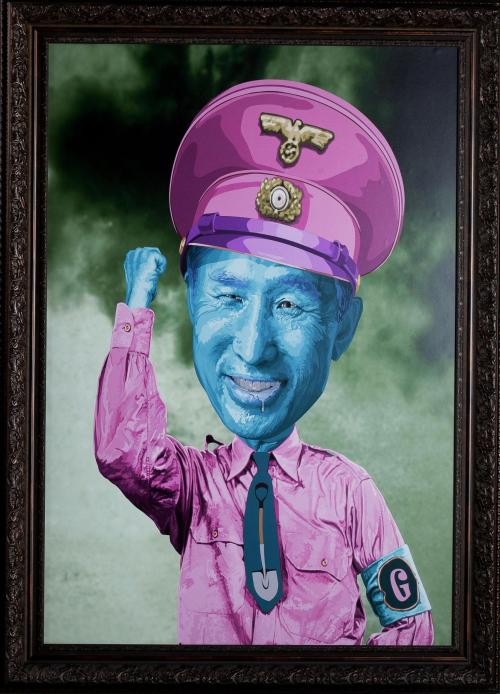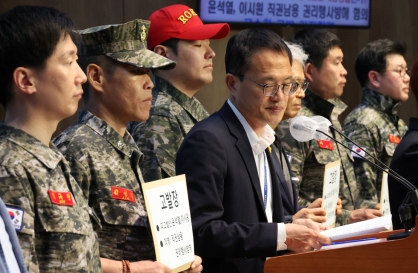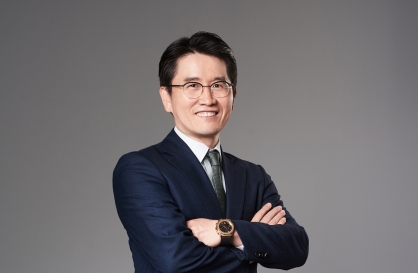The little but brave Astro Boy used to fascinate children back in the 1970s, shooting up toward the sky clenching his tiny fists, wearing his impressive pair of red boots.
Better known as Atom here, he was one of the first and most popular animation characters in the black-and-white TV days. He not only showered kids with hopes and dreams about science and outer space, but also pondered serious issues of the time such as the value of nature and humanity as society was rapidly advancing into the high-tech era.
Created in 1951 by Japan’s legendary cartoonist Tezuka Osamu, the character has been loved by all ages ever since. He was turned into a TV animation series in Japan in 1963 and was imported to South Korea in 1970. The first color-version of the show was broadcast here in 1982. Astro Boy still leaves his mark in many different genres today, including in the short and spiky “Atom hairdo” often sported by the younger generation.

The original drawings of the beloved character are currently on show at Goyang Aram Nuri’s Aram Art Museum and Gallery Nuri in Goyang City, Gyeonggi Province.
The exhibition “Dream of Atom,” held as a part of the “International Cartoon & Art Festival 2011/12,” showcases about 500 original drawings, paintings and publications of Osamu’s work including “Astro Boy,” “Jungle Emperor Leo” and “Sapphire Prince.”
Osamu, praised as the “God of Manga” in Japan, was of course talented, but even more earnest, according to the organizers of the show. He totally devoted himself to manga, leaving work only twice a week and sleeping only three to four hours a day. Throughout his life he drew 150,000 pages, produced 700 cartoons and over 60 animations.
“It is not an exaggeration to say that cartoons are divided into before and after Osamu. The Japanese neo-pop artists who are the latest craze in world’s art market are also influenced by him. The message Osamu consistently tried to deliver through his work is made up of seven agenda ― antiwar, peace, co-existence, environment, children, human rights, life ― and those are still effective and meaningful today,” said a curator of the exhibition.
While Astro Boy sheds light on humanity, Leo focuses on the relationship between animals and humans and Sapphire Prince the existence of men and women.


Osamu’s seven agenda are in fact the key words that penetrate through other sections of this year’s annual festival as well. Several Korean and Japanese artists including Mari Kim and Akiyama Takashi are showcasing their works that also contain such messages or pay homage to Osamu.
Of note is Korean artist Lee Ha’s special exhibition which was included in the show at the last minute after it caused a stir earlier this month. Lee placed paintings satirizing President Lee Myung-bak on bus stops and walls throughout central Seoul near Gwanghwamun on Dec. 8.
The painting, in which Lee has blue skin and is drooling, is one of the artist’s “Pretty Dictators” series he showcased in New York in May. Other “dictators” in the series include Osama Bin Laden, late Libyan dictator Moammar Gadhafi and late N.K. leader Kim Jong-il. The Jongno Police Station said on Dec. 9 that it will start an investigation into the artist over the incident.
“I think the public’s decision on Lee Ha’s work should be made after actually seeing the work,” said Lee Cheol-ju, producer of the exhibition. Several pieces from the series including President Lee Myung-bak’s are on show at the exhibition.
The exhibition runs through April 1 at Goyang Aram Nuri’s Aram Art Museum and Gallery Nuri in Goyang City, Gyeonggi Province. Tickets range from 6,000 won to 11,000 won.
In line with the exhibition, the Tezuka Osamu Films Festival will be held at Cinecode Sonjae in Sogyeok-dong, central Seoul from Jan. 13 to 22.
For details on the exhibition, call (031) 960-0180 or visit www.artgy.or.kr, and for the film festival, call (02) 730-3200 or visit www.cinecode.co.kr.
By Park Min-young (claire@heraldcorp.com)
-
Articles by Korea Herald






![[Weekender] How DDP emerged as an icon of Seoul](http://res.heraldm.com/phpwas/restmb_idxmake.php?idx=644&simg=/content/image/2024/04/25/20240425050915_0.jpg&u=)
![[Herald Interview] Guggenheim Museum makes a push for technology-based art with LG](http://res.heraldm.com/phpwas/restmb_idxmake.php?idx=644&simg=/content/image/2024/04/26/20240426050608_0.jpg&u=20240428114717)




![[Music in drama] An ode to childhood trauma](http://res.heraldm.com/phpwas/restmb_idxmake.php?idx=644&simg=/content/image/2024/04/25/20240425050929_0.jpg&u=)






![[Herald Interview] Mistakes turn into blessings in street performance, director says](http://res.heraldm.com/phpwas/restmb_idxmake.php?idx=652&simg=/content/image/2024/04/28/20240428050150_0.jpg&u=20240428174656)
